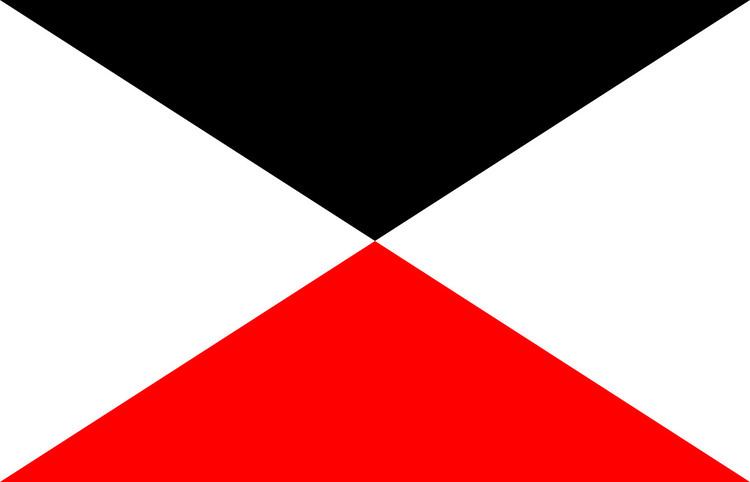 | ||
Active 3 October 1815 (1815-10-03)–1919 (1919) Size Approximately 44,000 (on mobilisation in 1914) Engagements Austro-Prussian WarBattle of KöniggrätzFranco-Prussian WarBattle of BeaumontBattle of SedanSiege of ParisWorld War IBattle of the FrontiersBattle of MonsFirst Battle of the MarneBattle of the Somme | ||
The IV Army Corps / IV AK (German: IV. Armee-Korps) was a corps level command of the Prussian and then the Imperial German Armies from the 19th Century to World War I.
Contents
- Austro Prussian War
- Franco Prussian War
- Peacetime organisation
- Organisation on mobilisation
- Combat chronicle
- 49th Landwehr Brigade
- Commanders
- References
It was established on 3 October 1815 as the General Command in the Duchy of Saxony (Generalkommando im Herzogtum Sachsen) and became the IV Army Corps on August 30, 1818. Its headquarters was in Magdeburg and its catchment area included the Prussian Province of Saxony and the adjacent Saxon Duchies (Saxe-Altenburg, Anhalt) and Principalities (Schwarzburg-Sondershausen, Schwarzburg-Rudolstadt, Reuss Elder Line and Reuss Junior Line).
In peacetime, the Corps was assigned to the VI Army Inspectorate but joined the 1st Army at the start of the First World War. It was still in existence at the end of the war in the 6th Army, Heeresgruppe Kronprinz Rupprecht on the Western Front. The Corps was disbanded with the demobilisation of the German Army after World War I.
Austro-Prussian War
The IV Corps formed part of Prince Friedrich Karl of Prussia's 1st Army and fought in the Austro-Prussian War against Austria in 1866, including the Battle of Königgrätz.
Franco-Prussian War
In the Franco-Prussian War of 1870-71, the Corps formed part of the 2nd Army. It saw action in the battles of Beaumont and Sedan, and in the Siege of Paris.
Peacetime organisation
The 25 peacetime Corps of the German Army (Guards, I - XXI, I - III Bavarian) had a reasonably standardised organisation. Each consisted of two divisions with usually two infantry brigades, one field artillery brigade and a cavalry brigade each. Each brigade normally consisted of two regiments of the appropriate type, so each Corps normally commanded 8 infantry, 4 field artillery and 4 cavalry regiments. There were exceptions to this rule:
V, VI, VII, IX and XIV Corps each had a 5th infantry brigade (so 10 infantry regiments)II, XIII, XVIII and XXI Corps had a 9th infantry regimentI, VI and XVI Corps had a 3rd cavalry brigade (so 6 cavalry regiments)the Guards Corps had 11 infantry regiments (in 5 brigades) and 8 cavalry regiments (in 4 brigades).Each Corps also directly controlled a number of other units. This could include one or more
Foot Artillery RegimentJäger BattalionPioneer BattalionTrain BattalionOrganisation on mobilisation
On mobilization on 2 August 1914 the Corps was restructured. 8th Cavalry Brigade was withdrawn to form part of the 2nd Cavalry Division and the 7th Cavalry Brigade was broken up: the 10th Hussar Regiment was raised to a strength of 6 squadrons before being split into two half-regiments of 3 squadrons each and the half-regiments were assigned as divisional cavalry to 7th and 8th Divisions; the 16th Uhlan Regiment was likewise assigned as two half-regiments to 13th and 14th Divisions of VII Corps. Divisions received engineer companies and other support units from the Corps headquarters. In summary, IV Corps mobilised with 25 infantry battalions, 9 machine gun companies (54 machine guns), 6 cavalry squadrons, 24 field artillery batteries (144 guns), 4 heavy artillery batteries (16 guns), 3 pioneer companies and an aviation detachment.
Combat chronicle
On mobilisation, IV Corps was assigned to the 1st Army on the right wing of the forces for the Schlieffen Plan offensive in August 1914 on the Western Front. It participated in the Battle of Mons and the First Battle of the Marne which marked the end of the German advances in 1914. Later, it participated in the Battle of the Somme, particularly the Battle of Delville Wood and the Battle of Pozières.
It was still in existence at the end of the war in the 6th Army, Heeresgruppe Kronprinz Rupprecht on the Western Front.
49th Landwehr Brigade
During the war, the 49th Landwehr Brigade joined the corps; it had originally been part of 4th Army. It had its headquarters at Bois de Lord farm on the River Aisne for most of the First World War. From 1915 the 49th Landwehr Brigade was commanded by Lt. General Hans von Blumenthal, who had retired in 1910 after disagreements with his commanding officer General Maximilian von Prittwitz. On the outbreak of war he had returned to active service, first to command 60th Landwehr Brigade.
Commanders
The IV Corps had the following commanders during its existence:
